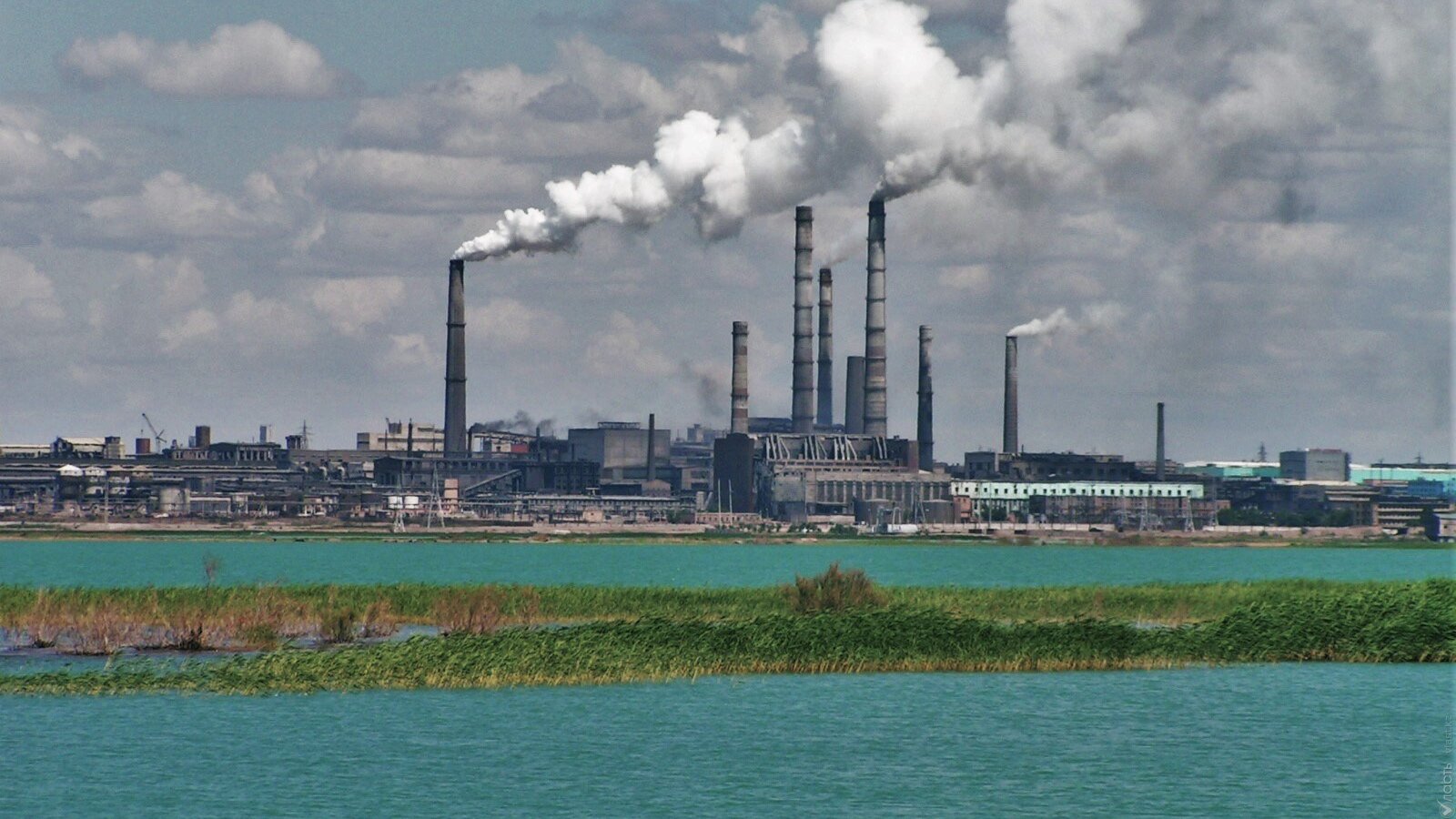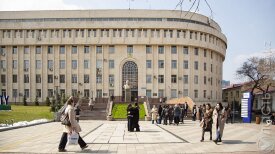Осы мақаланың қазақша нұсқасын оқыңыз.
Читайте этот материал на русском.
Kazakhstan is highly dependent on coal for its electricity generation and routinely faces shortages due to outdated infrastructure. One of the solutions that the government has found was to increase the share of gas in the electricity sector. Yet, Kazakhstan could have the potential to increase the share of clean wind and solar electricity sources at least fourfold to 20% by 2030, above the current target of 15%, reducing coal dependence and increasing the reliability of the grid and building an independent power generation sector.
The shortage of electricity in Kazakhstan is mostly compensated by supplies from Russia. Monopolist Inter RAO sells electricity to Kazakhstan at an inflated price, almost twice as high as the locally generated power. Between July-December 2023, Kazakhstan imported more than 3 billion kWh of Russian electricity worth $172 million. In the autumn-winter period, the deficit was about 1 GW. The ministry of energy predicts that the deficit will grow to 6.2 GW by 2030.
Today, the electricity generation sector in Kazakhstan is characterized by coal dependence (67%), high rates of equipment wear and tear (56%), and electricity losses across the grid (30%). According to the government action plan for the development of the electricity generation sector, Kazakhstan could increase its coal and gas generation capacity to 35 MW through the reconstruction and expansion of existing power plants.
Power plants with a total capacity of at least 6 GW are being planned. In late 2023, plans for 3.4 GW of the total were announced, as well as 6 GW of gas capacity. The three coal-fired power plants that were announced in Kokshetau, Oskemen, and Semey will be built by the Russian company Inter RAO (and partly paid by Kazakhstan’s Single Pension Fund), the same monopolist which sells Kazakhstan electricity at an inflated price.
This decision is partly explained by the fact that Russia remains the only possible source of financing for coal-fired thermal power plants against the backdrop of a global policy of divestment from coal in an effort to achieve carbon neutrality. China, a major funder of coal projects overseas, has also halted future foreign coal funding.
It is worth noting that the current price of electricity is artificially low in Kazakhstan due to subsidies and tariff setting. However, electricity prices have risen due to a change in the tariff policy: Tariffs are now intended to pay back the budget costs for the modernization of networks and thermal power plants. At the same time, subsidies for coal- and gas-fired power plants have skyrocketed in recent years, from $1.4 million in 2019 to $13.8 million in 2022, a more than 10-fold increase. Subsidies in the coal, gas, and oil industries outside of power generation have also increased significantly.
The potential of solar and wind energy to solve Kazakhstan's electricity problems is great, but is still disparaged as an unreliable source of electricity. However, looking at the experience in G20 countries, as well as in the countries of central Europe (Poland, Slovakia, Slovenia, Czech Republic, Romania, Hungary, and Croatia), the price of solar and wind power plants has already become cheaper than to build and operate new coal and gas power plants.
By 2030, the levelized cost of electricity from new solar and wind power plants in Kazakhstan is estimated to be 47-62% lower than for new coal power plants. In addition, new coal and gas power plants in Kazakhstan are becoming more expensive. International financial institutions such as the EBRD, the World Bank and others also offer several programs and grants for the purpose of decarbonization, in an effort to move away from coal.
A common criticism of solar and wind energy is that it is inconsistent and unreliable. But battery energy storage systems (BESS), as well as pumped-storage hydroelectricity, demand-side flexibility, and interconnectors - that is, a modern and solid infrastructure - are undoubtedly capable of integrating wind and solar into a reliable electricity system.
At the moment, Kazakhstan has planned to grow its electricity generation capacity by 6 GW with coal and 6 GW with gas, as well as 3 GW with nuclear, 0.15 GW with solar and 3.3 GW with wind power. Of these, wind farms for a total of 3 GW are accounted for by three projects in the Zhambyl and in Zhetysu regions, sponsored by Saudi Arabia’s ACWA Power, France’s Total, and UAE’s Masdar. All of these projects include electrical energy storage systems (BESS).
At a time when Kazakhstan’s electricity system relies on aging coal-fired power plants, which leads to increased breakdowns, decarbonizing the electricity grid and developing a new more sustainable, efficient, cleaner, and independent system that is also more cost-effective appears to be a smarter solution than investing in coal and gas.
Decarbonization is a major challenge, more labor-intensive than the construction and modernization of conventional coal and gas power plants, more expensive in terms of human resources, including specialists in the technical, strategic, and economic integration of renewable energy sources. And Kazakhstan has every opportunity to achieve this goal: It just needs political will and determination, starting with a plan to phase out new coal capacity and raise targets for solar and wind energy generation.
Importantly, it is necessary to reverse the customary course of prioritizing production and exports instead of developing domestic resources to improve the economy and the quality of life.
Hyrasia One is a project sponsored by Germany's SVEVIND Energy Group that plans to build 40 GW of wind and solar capacity in the Mangistau region (almost twice the installed capacity of Kazakhstan's entire system) to produce hydrogen for export to Europe. The location of such a large-scale project raises concerns about negative effects on local wildlife and residents. The output of the project will be exported without any benefits to the local community. This repeats once again the story of oil in the country.
Kazakhstan also intends to connect its energy system with Azerbaijan and Uzbekistan’s through a cable at the bottom of the Caspian Sea to export green energy. It would be instead key to prioritize the reliability, stability, and efficiency of the electricity system in Kazakhstan. Resources should be redirected from projects such as Hyrasia One, cables at the bottom of the Caspian Sea, and new coal and gas capacity to the development of clean, sustainable, affordable, and self-sufficient energy in Kazakhstan.
Kazakhstan’s vast landmass and low population density, makes the modularity of solar and wind power plants advantageous. It could be possible to build independent energy systems from 1 MW, without electrical networks from a central thermal power plant. In addition, solar and wind energy do not require exclusive ownership: Residents could own and operate the power plants themselves.
This is the core idea of a just energy transition: From polluting and deadly coal and gas controlled by corporations to renewable solar and wind energy that everyone can control.
With government assistance, it is possible to create projects with self-sufficient solar and wind power systems in villages. Electricity consumption in a small village in Kazakhstan can be comparable, for example, with energy consumption on the island of Samsø in Denmark with a population of 3,724 people. They switched from coal-fired electricity, which they received via cable from mainland Denmark, to 100% renewable energy with twenty wind turbines.
The most energy-deficient zone in Kazakhstan is the south of the country, which also has the greatest solar energy potential. This untapped capacity could cover this energy deficit.
The choice now is between fossil and renewable energy. On the one hand, the government could choose to subsidize coal and gas-fired thermal power plants, which in the future will fully transition to gas and thus lead to higher costs for projects that contribute to air pollution and climate change, and are economically and politically unprofitable. On the other hand, Kazakhstan could bet on new electricity systems with priority to improve the lives of the population.
Solar and wind energy, in addition to supporting infrastructure, would represent a better solution than coal and gas: Cheaper, cleaner, safer, and independent of fluctuating fuel and transportation prices.
Zhanaiym Kozybay, researcher, Global Energy Monitor.
Поддержите журналистику, которой доверяют.








